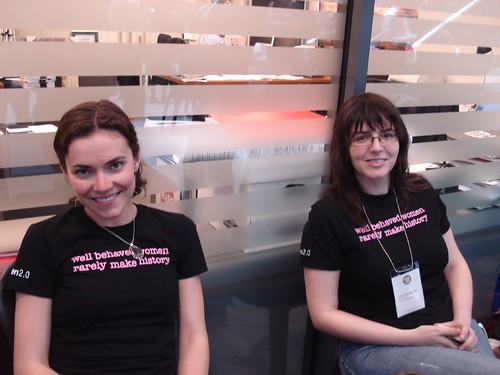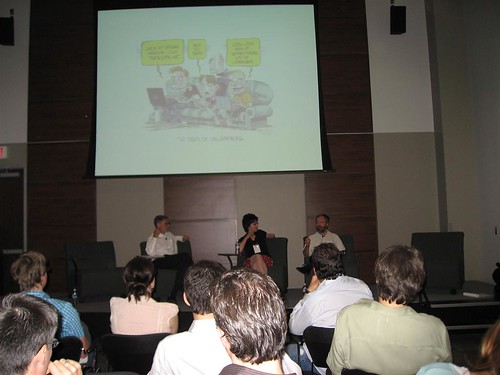You see, any user can change any entry, and if enough other users agree with them, it becomes true. ... If only the entire body of human knowledge worked this way. And it can, thanks to tonight's word: Wikiality. Now, folks, I'm no fan of reality, and I'm no fan of encyclopedias. I've said it before. Who is Britannica to tell me that George Washington had slaves? If I want to say he didn't, that's my right. And now, thanks to Wikipedia, it's also a fact.Indeed. And, it has just come to light that Wikiality is the 21st century version of voodoo. Sympathetic magic 2.0, if you will. Complete with tagging. The problem is, that when you're tagged, bad things can happen.
We should apply these principles to all information. All we need to do is convince a majority of people that some factoid is true. ... What we're doing is bringing democracy to knowledge.
Major media outlets are reporting that "Investigators had not yet discovered the bodies of pro wrestler Chris Benoit, his wife and their 7-year-old son when someone altered Benoit's Wikipedia entry to mention his wife's death, authorities said." Now this news, by itself, is possibly suspicious. Who knew about the death? Had Benoit contacted anyone? Perhaps there was some sort of conspiracy? All sorts of police story skulduggery is possible. But when you chase the links a little, something far more sinister emerges:
Hey everyone. I am here to talk about the wikipedia comment that was left by myself. I just want to say that it was an incredible coincidence. Last weekend, I had heard about Chris Benoit no showing Vengeance because of a family emergency, and I had heard rumors about why that was. I was reading rumors and speculation about this matter online, and one of them included that his wife may have passed away, and I did the wrong thing by posting it on wikipedia to spite there being no evidence. I posted my speculation on the situation at the time and I am deeply sorry about this, and I was just as shocked as everyone when I heard that this actually would happen in real life. It is one of those things that just turned into a huge coincidence. That night I found out that what I posted, ended up actually happening, a 1 in 10,000 chance of happening, or so I thought. I was beyond wrong for posting wrongful information, and I am sorry to everyone for this. I just want everyone to know it was stupid of me, and I will never do anything like this again. I just posted something that was at that time a piece of wrong unsourced information that is typical on wikipedia, as it is done all the time.Thanks alot, Colbert! Encouraging people to post a piece of wrong, unsourced information - in order to make it true! Do you now understand the potential power - evil power - of wikiality? Wikipedia is so powerful, and has become so pervasive and intertwined with the fabric of normal reality, that it now has the power... to create... reality - even if that reality results in a murder-suicide tragedy.
Beware of Wikipedia and the evil forces that lurk deep within its servers.
[Technorati tags: stephen colbert | wikipedia | wikiality | chris benoit]


